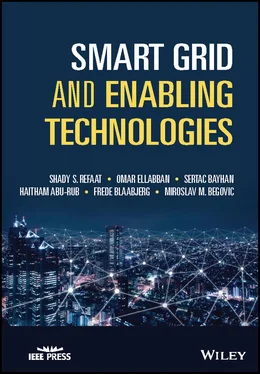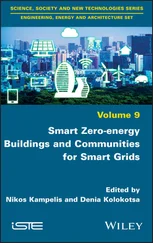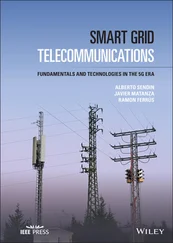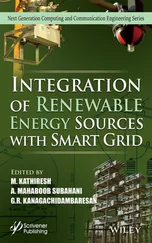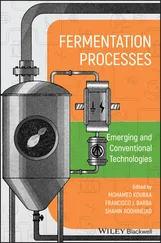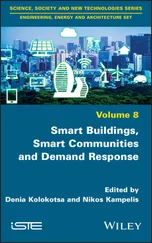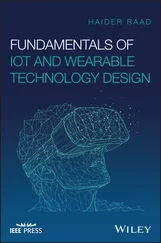Frede Blaabjerg - Smart Grid and Enabling Technologies
Здесь есть возможность читать онлайн «Frede Blaabjerg - Smart Grid and Enabling Technologies» — ознакомительный отрывок электронной книги совершенно бесплатно, а после прочтения отрывка купить полную версию. В некоторых случаях можно слушать аудио, скачать через торрент в формате fb2 и присутствует краткое содержание. Жанр: unrecognised, на английском языке. Описание произведения, (предисловие) а так же отзывы посетителей доступны на портале библиотеки ЛибКат.
- Название:Smart Grid and Enabling Technologies
- Автор:
- Жанр:
- Год:неизвестен
- ISBN:нет данных
- Рейтинг книги:3 / 5. Голосов: 1
-
Избранное:Добавить в избранное
- Отзывы:
-
Ваша оценка:
- 60
- 1
- 2
- 3
- 4
- 5
Smart Grid and Enabling Technologies: краткое содержание, описание и аннотация
Предлагаем к чтению аннотацию, описание, краткое содержание или предисловие (зависит от того, что написал сам автор книги «Smart Grid and Enabling Technologies»). Если вы не нашли необходимую информацию о книге — напишите в комментариях, мы постараемся отыскать её.
Smart Grid and Enabling Technologies
Smart Grid and Enabling Technologies
Smart Grid and Enabling Technologies — читать онлайн ознакомительный отрывок
Ниже представлен текст книги, разбитый по страницам. Система сохранения места последней прочитанной страницы, позволяет с удобством читать онлайн бесплатно книгу «Smart Grid and Enabling Technologies», без необходимости каждый раз заново искать на чём Вы остановились. Поставьте закладку, и сможете в любой момент перейти на страницу, на которой закончили чтение.
Интервал:
Закладка:
The increasing damage and rapid depletion of traditional energy sources compel the worldwide population to achieve the necessary transition toward RES. It is vital that RES are included in the energy mix, especially, with an average growing rate of 1.8% energy consumption per year [1]. Existing electric power systems rely on fuel and coal to generate energy. The escalating permeation of RES aims to satisfy the expected global energy demand increase and the global energy demand to a large extant in order to meet the world's energy demand growth [2].
As a result of some environmental issues, a number of related organizations have engaged in research to increase efficiency and green power plants using developed technology. Concerns regarding environmental protection are rising, RES is therefore sought and examined. Fossil fuel and renewable energy costs, social and environmental prices are going in different directions and the economic and policy plans required to aid the extensive spreading of sustainable markets for renewable energy systems are developing quickly. Future growth in the energy sector will mainly be in the new regime of renewables. Hence, the transition to renewable energy can support us in meeting the challenges of decreasing greenhouse gas emissions, hindering future extreme weather and climate effects, and maintaining a reliable, timely, and cost‐efficient delivery of energy. The integration of renewable energy may result in substantial dividends for the future of energy security.
Renewables, with nuclear and hydroelectric power, deliver 50% of the extra energy needed out to 2035. Furthermore, renewable energy is the fastest growing source of energy as a result of decreasing capital costs coupled with rising penetration and due to the present state and federal policies investing in its employment, with its share in the primary energy rising to 10% by 2035, up from 3% in 2015. In addition, renewables account for 40% of the increase in power generation, making their share of global power rise from 7% in 2015 to approximately 20% by 2035 [3, 4].
RES is helped by nature and produce energy straight from the sun (thermal, photo‐chemical, and photo‐electric), indirectly from the sun (wind, hydropower, and biomass), or from other natural phenomena of the environment (geothermal and tidal energy). Renewable energy does not include energy resources originating from fossil fuels, waste products from fossil sources, or waste products from inorganic sources [5]. Renewable resources are gained from solar energy, wind, falling water, the heat of the earth (geothermal), plant materials (biomass), waves, ocean currents, temperature differences in the oceans and the energy of the tides. Renewable energy technologies turn these natural energy sources into practical forms of energy – usually electricity, heat, chemicals, or mechanical energy. Figure 2.1illustrates an outline of renewables utilized across the globe and Figure 2.2illustrates the theoretical potential of the RES which are able to provide over 3000 times the current energy consumption around the world [6]. In 24 hours, the sunlight that reaches the earth generates sufficient energy to meet the present energy requirements for 8 years [7–9].
The renewable energy markets – electricity, heating and transportation – have been rising over the previous five years. The integration of well‐known technologies, for example, hydro and additional advanced technologies including wind and solar photovoltaic, has increased rapidly, which gave confidence in the technologies, decreased prices and increased new opportunities [10]. Currently, renewable energy delivers approximately 18.3% of the final energy consumption, 50% of this percentage consists of advanced renewables, equally divided between electricity and direct heat applications, and the other 50% involves traditional biomass utilized for heating and cooking. The percentage of renewable energy in the total final energy will merely increase by 2030 from 18.3 to 21% [11]. Renewable energy generating capacity experienced its greatest annual rise ever in 2016, with approximately 161 Gigawatts (GW) of capacity added making the total global capacity almost 2017 GW, as illustrated in Figure 2.3. Furthermore, in 2019, renewables were responsible for approximately 7% of net additions to global power generating capacity [12].

Figure 2.1 Flowchart of the common renewable energy sources.
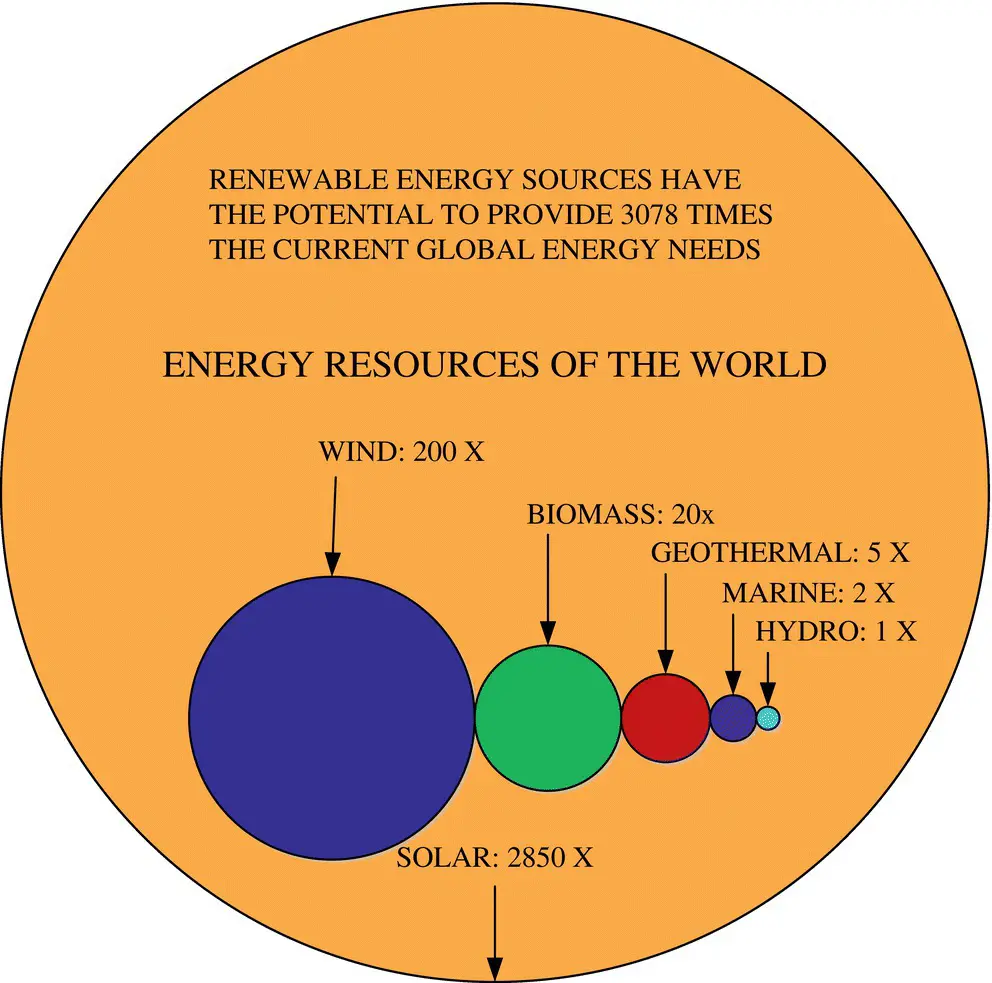
Figure 2.2 Renewable energy resources theoretical potential.

Figure 2.3 Total renewable power installed capacity (GW), including its annual growth rate, 2000–2019. Adapted from [12].
This chapter summarizes the benefits, growth, investment and deployment. Furthermore, challenges of integrating them into the electricity grid will be addressed. The content of this chapter is an updated and extension of earlier authors' publication [9].
2.2 Description of Renewable Energy Sources
2.2.1 Bioenergy Energy
Biomass includes all organic materials originating from plants and trees and entails the use and storage of the sun's energy by photosynthesis. Biomass energy (bioenergy) is the transformation of biomass into practical forms of energy including heat, electricity, and liquid fuels (biofuels). Biomass for bioenergy can originate from lands, for example, from dedicated energy crops and from residues produced in the processing of crops for food or different products [13–15].
Biomass energy is renewable and sustainable, but is comparable to fossil fuels. Even although biomass can be burned to acquire energy, it may additionally come as a feedstock to be transformed to numerous liquids or gas fuels (biofuels). Biofuels can be transported and stored, and permit heat and power production when needed, which is crucial in an energy mix with a high dependence on intermittent sources such as wind. These similarities are responsible for the essential contribution biomass is projected to offer in future energy usage [16]. Consequently, a plan to enhance biorefinery and biotransformation technologies to transform biomass feedstock into clean energy fuels is presently being developed. Interconversion of many biomass and energy forms in the carbon cycle is shown in Figure 2.4, [17]. Biomass feedstock can be transformed into bioenergy by thermo‐chemical and bio‐chemical transformation processes. These processes entail combustion, pyrolysis, gasification, and anaerobic digestion, as illustrated in Figure 2.5. Furthermore, the use of biomass‐derived fuels is to substantially counteract current energy security and trade balance problems, and adopt new socio‐economic improvements for many nations, as shown in Table 2.1[18].
Biomass has the ability to reliably deliver baseload power, making it more favorable than other RES including wind and solar, however, the big disadvantage of biomass fuel is the lack of efficiency it possesses. Even although biomass could be utilized to generate energy to meet customer demand, biomass has huge amounts of water per unit of weight, which implies that it lacks energy potential as fossil fuels. Furthermore, transportation costs for biomass are greater per unit of energy than fossil fuels due to its small energy density.
Читать дальшеИнтервал:
Закладка:
Похожие книги на «Smart Grid and Enabling Technologies»
Представляем Вашему вниманию похожие книги на «Smart Grid and Enabling Technologies» списком для выбора. Мы отобрали схожую по названию и смыслу литературу в надежде предоставить читателям больше вариантов отыскать новые, интересные, ещё непрочитанные произведения.
Обсуждение, отзывы о книге «Smart Grid and Enabling Technologies» и просто собственные мнения читателей. Оставьте ваши комментарии, напишите, что Вы думаете о произведении, его смысле или главных героях. Укажите что конкретно понравилось, а что нет, и почему Вы так считаете.
